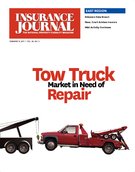The environment for employment litigation has more than ever been shaped by Supreme Court judges and settlements for wage and hour class actions rose in 2016 while those for other employment-related claims fell, according to a new report.
The Workplace Class Action Litigation Report by Seyfarth Shaw analyzed 1,331 class action rulings from 2016 and to identify emerging litigation trends.
“The U.S. Supreme Court decided several cases in 2016 that favored workers bringing class actions, which in turn portend significant challenges for employers facing these exposures in 2017,” said Seyfarth’s Gerald L. Maatman Jr., author of the report. “While settlements were down for employment discrimination and ERISA class actions and government enforcement litigation, settlement numbers were up for wage and hour class actions and collective actions.”
The report identifies six trends in workplace litigation:
Class action dynamics increasingly have been shaped by recent rulings of the U.S. Supreme Court. Over the past several years, the Court has accepted more cases and issued more rulings than ever that have impacted the prosecution and defense of class actions and government enforcement litigation. Plaintiffs’ lawyers scored several significant victories in 2016 that will make class actions easier to prosecute and result in more certification orders.
The monetary value of the top employment-related class action settlements declined significantly in 2016 after reaching all-time highs in 2014 and 2015. However, wage and hour settlements increased significantly.
Federal and state courts issued more favorable class certification rulings for the plaintiffs’ bar in 2016 than in past years, but employers did better in decertification motions than in past years.
Overall complex employment-related litigation filings were flat in 2016 after several years of increases. For the first time in over a decade wage and hour filings declined.
Wage and hour certification decisions in 2016 increased compared to 2015. This manifests the focus of the plaintiffs’ bar in wage and hour compliance issues.
Government enforcement lawsuits brought by the Department of Labor and the Equal Employment Opportunity Commission continued the aggressive litigation programs of both agencies.
Topics Lawsuits
Was this article valuable?
Here are more articles you may enjoy.



 Jury Awards $80M to 3 Former Zurich NA Employees for Wrongful Termination
Jury Awards $80M to 3 Former Zurich NA Employees for Wrongful Termination  California Sees Two More Property Insurers Withdraw From Market
California Sees Two More Property Insurers Withdraw From Market  AIG General Insurance Chairman McElroy to Retire May 1
AIG General Insurance Chairman McElroy to Retire May 1  Chubb to Acquire MGA Healthy Paws From Aon
Chubb to Acquire MGA Healthy Paws From Aon 


